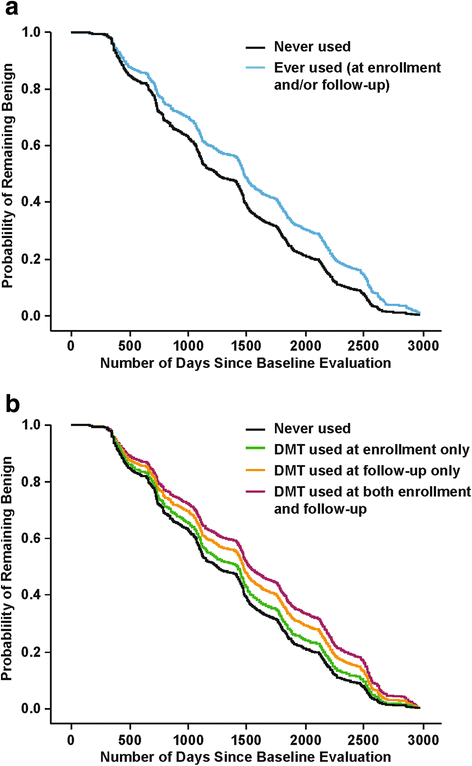Factors associated with benign multiple sclerosis in the New York State MS Consortium (NYSMSC)
- PMID: 27416843
- PMCID: PMC4946222
- DOI: 10.1186/s12883-016-0623-2
Factors associated with benign multiple sclerosis in the New York State MS Consortium (NYSMSC)
Abstract
Background: This retrospective analysis explored prognostic factors associated with a benign multiple sclerosis (BMS) disease course at baseline and over the 4-year follow-up.
Methods: Patients from the centralized New York State Multiple Sclerosis Consortium registry were classified as having BMS according to 3 different criteria centered on disease duration and disability. Additional analyses explored prognostic factors associated with BMS using the most conservative disability criteria (Expanded Disability Status Scale ≤2 and disease duration ≥10 years).
Results: Among 6258 patients who fulfilled eligibility criteria, 19.8 % to 33.3 % were characterized as having BMS, at baseline depending on classification criteria used. Positive prognostic factors for BMS at baseline included female sex (p < 0.0001) and younger age at onset (p < 0.0001); negative prognostic factors included progressive-onset type of MS and African-American race. Of the 1237 BMS patients (per most conservative criteria), 742 were followed for a median of 4 years to explore effect of disease-modifying treatment (DMT) on benign status. DMT (p = 0.009) and longer disease duration (p = 0.007) were the only significant positive predictors of maintaining BMS at follow-up. The protective effect was stronger for patients taking DMT at both enrollment and follow-up (OR = 0.71; p = 0.006).
Conclusions: There is a need for development of more reliable prognostic indicators of BMS. Use of DMT was significantly associated with maintaining a benign disease state.
Keywords: Benign multiple sclerosis; DMT; Disease course; Disease-modifying treatment; Multiple sclerosis.
Figures

References
-
- Glad SB, Aarseth JH, Nyland H, et al. Benign multiple sclerosis: a need for a consensus. Acta Neurol Scand Suppl 2010:44–50. doi:10.1111/j.1600-0404.2010.01375.x - PubMed
Publication types
MeSH terms
LinkOut - more resources
Full Text Sources
Other Literature Sources
Medical

